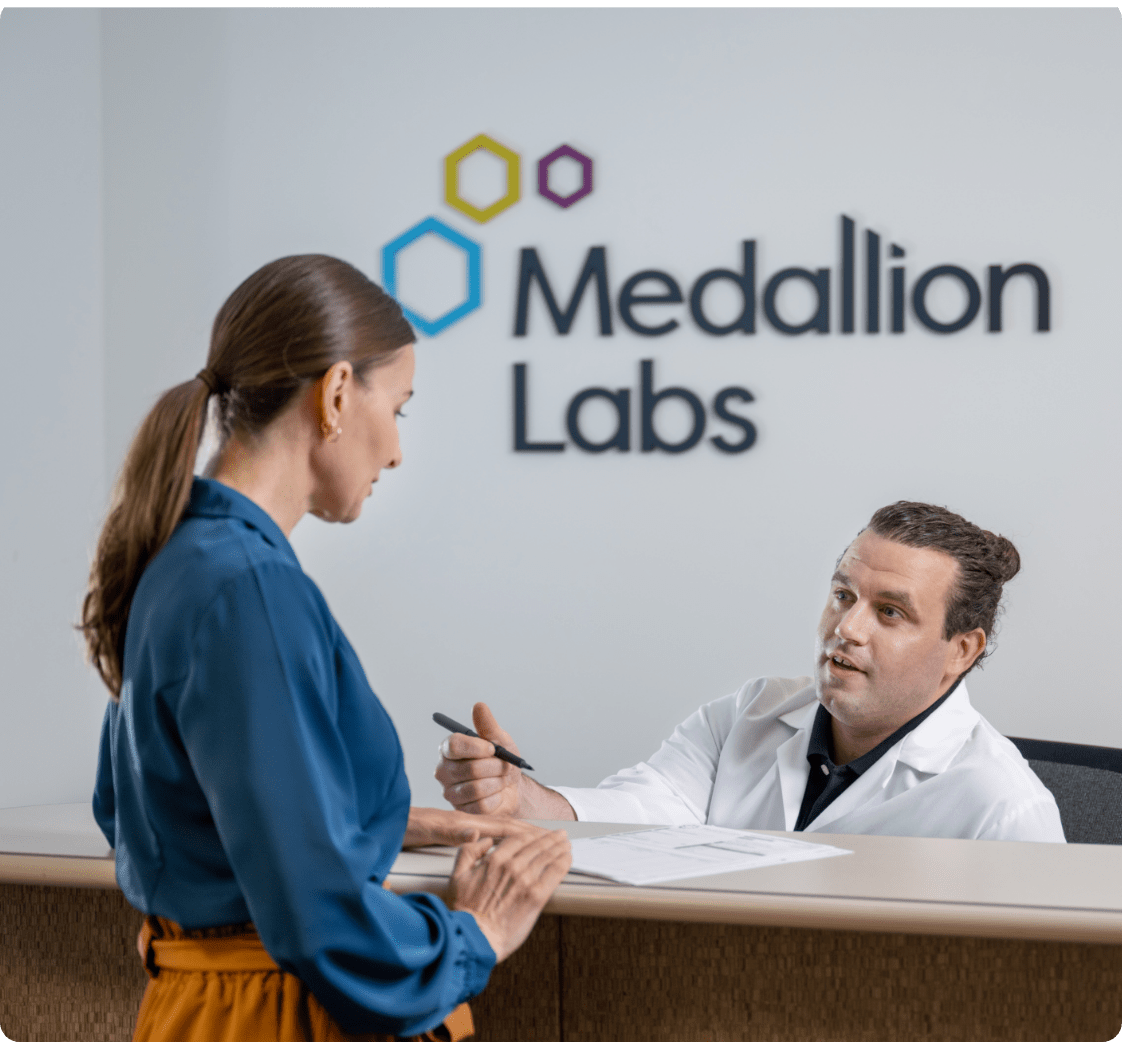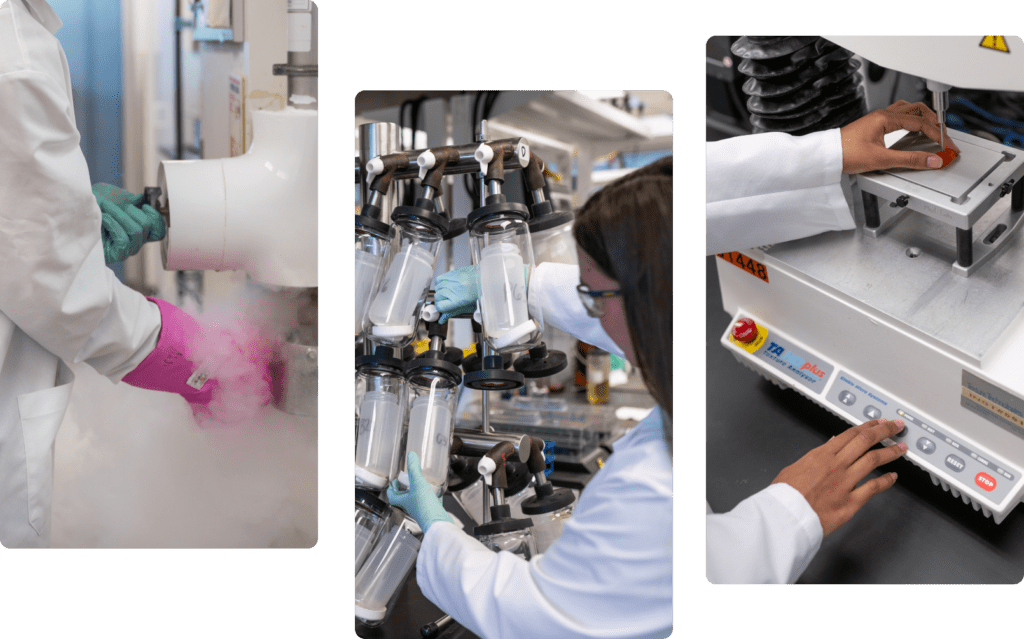Metals Screen I Test
- Price
$100 per analysis
- Turnaround time
7 – 9 Business Days
- Rush
Available

Technical data sheet
- Method description
Samples are prepared by microwave closed vessel digestion with nitric acid. Solutions are infused into an ICP OES and quantified based on an external standard calibration curve.
Metals Tested:
- Calcium
- Iron
- Potassium
- Sodium
- Acceptable matrices
Food Products, Food Ingredients, Nutraceuticals, Beverages
- Unacceptable matrices
Some classes of compounds are unsuitable for closed vessel microwave digestion as they are highly reactive with nitric acid and other oxidizers which may become nitrated and potentially explosive. These include: Animal fat (lard), pure fats and oils, glycerin and glycols, volatile flavoring agents, and alcoholic beverages. If you have a question regarding your matrix, please call customer service at 1-800-245-5615.
- Limit of quantitation
1 - 3 mg/100g Limit of Quantitation (LOQ) is dependent on the individual metal.
- Equipment
Inductively Coupled Plasma - Optical Emission Spectroscopy (ICP - OES)
- Method reference
AOAC 2011.14
- Reportable unit
mg/100g
- Sample size requirements
10 g
- Information required by submitter
Please supply estimates
Common Metals Screen I Test Testing Questions
We make every effort to keep our methods and detection limits up to date according to the latest standards and qualifications. If you have any questions regarding the limit of detection/quantification or method references, please contact our Customer Service team at 1-800-245-5615.
Our standard turnaround time is 10 business days for most assays. There are some assays that require a longer turnaround time. We also offer a RUSH service that is half the time of the standard turnaround time of the assay at double the cost of the assay. A few assays that we provide cannot be rushed due to the nature of the test. Please check the specific assay you are interested in regarding the ability to RUSH the turnaround time.
While regulations can vary, generally, Vitamin D and our Metal Screen I Package (Calcium, Iron, Potassium, and Sodium) are most commonly requested when creating a nutrition label.
The ICP instrumentation is typically more sensitive than Atomic Absorption techniques and allows for very accurate analytical testing. Medallion Labs uses ICP-MS and ICP-OES for our metal testing.
The quantification limits for each metal is different depending on the instrument that they are run with. For mercury testing the LOQs also vary depending on the sample matrix (solid, liquid, oil). These LOQs for mercury testing are (solids = (< 4.0ppb), liquids = (< 2.0ppb), oils = (<12.0ppb)). The main difference for mercury testing is that for testing mercury there is also a sample result maximum. This maximum is 800 ppb for mercury results. For testing results using the ICP-MS associated with our Trace metals test, the LOQs are as follows: (Boron = ( 500ppb), Aluminum = ( 100ppb), Chromium = ( 50ppb), Cobalt = ( 10ppb), Nickel = ( 50ppb), Arsenic = ( 10ppb), Selenium = ( 10ppb), Molybdenum = ( 10ppb), Cadmium = ( 10ppb), Tin = ( 10ppb), Antimony = ( 10ppb), Barium = ( 10ppb), Lead = ( 10ppb)). These LOQs are the same for liquid or solid samples. These take into account sample weight and final volumes. For testing results using the ICP-OES associated with our nutritional metals testing, the LOQs are as follows: (Calcium = (1.00 mg/100g), Copper = (1.00 mg/100g), Iron = (1.00 mg/100g), Potassium = (3.00 mg/100g), Magnesium = (1.00 mg/100g), Manganese = (1.00 mg/100g), Sodium = (3.00 mg/100g), Phosphorus = (1.00 mg/100g), Zinc = (1.00 mg/100g)). These LOQs are the same for liquid or solid samples. These take into account sample weight and final volumes.
For food safety concerns, particularly heavy metals, we would recommend working closely with a food safety consultant to go over test results and develop an action plan as needed.
When testing using the ICPs, for testing foods and samples with high moisture content, the lab would just require a higher sample weight to test the sample as a liquid. Any sample with a moisture content higher than 90% would classify as a liquid. When testing foods with high fat content, any sample with greater than 95% fat, the lab unfortunately has to send this sample type out for testing. This however, is not an issue for testing for mercury, since the lab uses a different instrument called the DMA-80. For high fat samples there is a different temperature method used to ensure accurate mercury results for high fat samples.
Our food testing experts are here to help.
"*" indicates required fields

Helpful content related to Metals Screen I Test
Submit your order online and ship your samples today. If you have questions, we are always here to help.
A food testing program designed with mid-market and enterprise food and ingredient manufacturers in mind.
